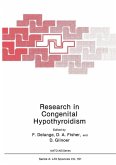HIS book grew out of suggestions from the Publications Com T mittee of the American Physiological Society, which has planned a series covering the development of ideas about a number of areas of physiology. This was prompted by the great success of Circulation of the Blood: Men and Ideas, edited by A. P. Fishman and D. W. Richards, which was originally published in 1964 and then reissued by the Society in 1982. Three companion books are being completed in conjunction with the centennial year of the American Physiolog ical Society: this volume on endocrinology, one on the kidney, and one on membrane transport. It was our purpose not to provide a complete bibliography or a complete listing of all the progress made in a given area but to show PREFACE the principal ideas and how they developed. Consequently, limi- tions were placed on the number of references and on the length of each chapter. This book covers most of the areas of endocrinology; it is not completely comprehensive but discusses the main pathways of development and highlights the prominent investigators. We hope that the book as a whole will give an excellent picture of the evolution of this exciting area of physiology and the people involved in its growth. Most of the endocrine organs were discovered in antiquity by such early workers as Aristotle and Galen. The last endocrine gland to be discovered was the parathyroid in 1891 by Gley.
Dieser Download kann aus rechtlichen Gründen nur mit Rechnungsadresse in A, B, BG, CY, CZ, D, DK, EW, E, FIN, F, GR, HR, H, IRL, I, LT, L, LR, M, NL, PL, P, R, S, SLO, SK ausgeliefert werden.









